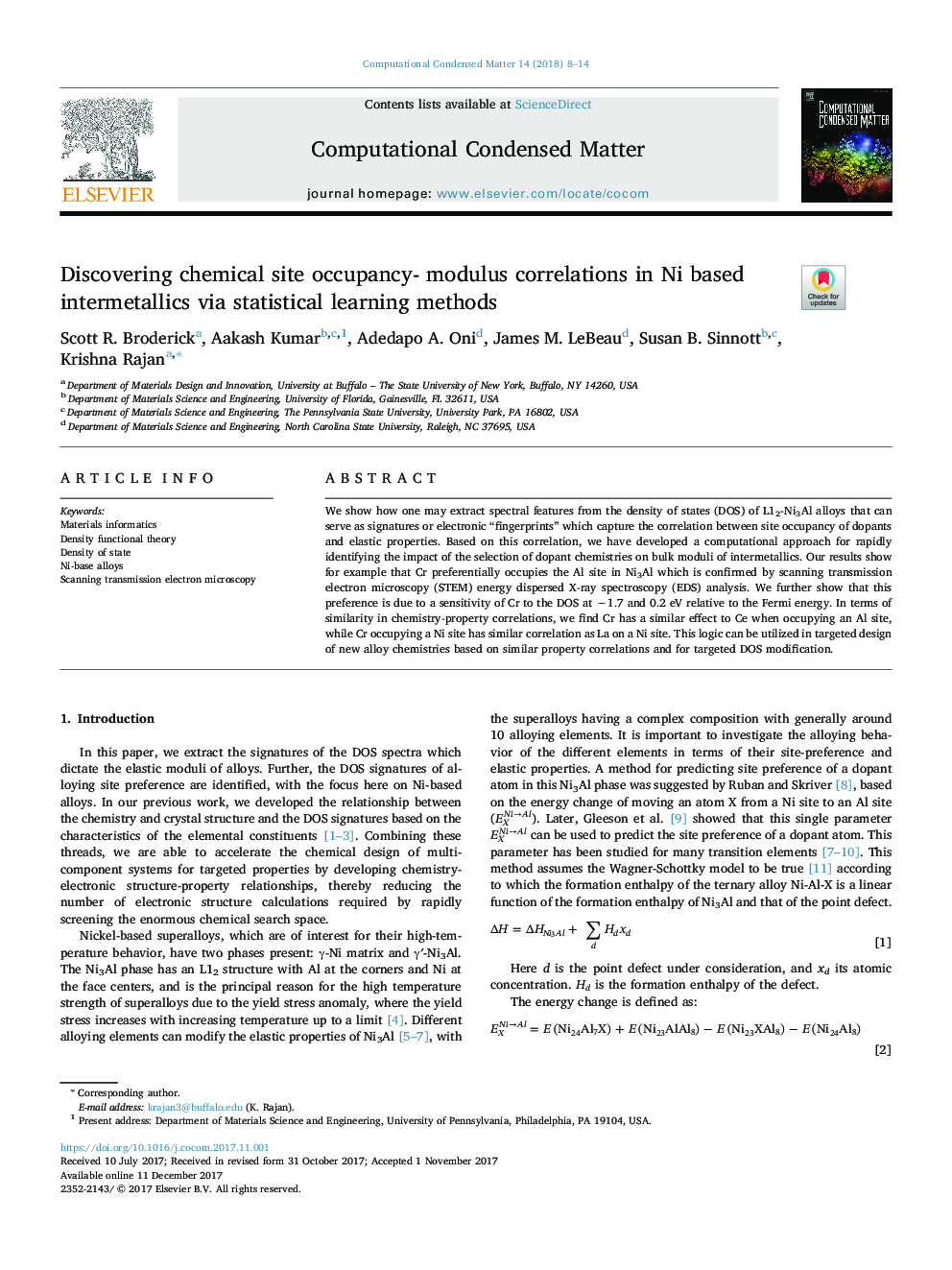| Article ID | Journal | Published Year | Pages | File Type |
|---|---|---|---|---|
| 7956648 | Computational Condensed Matter | 2018 | 7 Pages |
Abstract
We show how one may extract spectral features from the density of states (DOS) of L12-Ni3Al alloys that can serve as signatures or electronic “fingerprints” which capture the correlation between site occupancy of dopants and elastic properties. Based on this correlation, we have developed a computational approach for rapidly identifying the impact of the selection of dopant chemistries on bulk moduli of intermetallics. Our results show for example that Cr preferentially occupies the Al site in Ni3Al which is confirmed by scanning transmission electron microscopy (STEM) energy dispersed X-ray spectroscopy (EDS) analysis. We further show that this preference is due to a sensitivity of Cr to the DOS at â1.7 and 0.2Â eV relative to the Fermi energy. In terms of similarity in chemistry-property correlations, we find Cr has a similar effect to Ce when occupying an Al site, while Cr occupying a Ni site has similar correlation as La on a Ni site. This logic can be utilized in targeted design of new alloy chemistries based on similar property correlations and for targeted DOS modification.
Keywords
Related Topics
Physical Sciences and Engineering
Materials Science
Materials Science (General)
Authors
Scott R. Broderick, Aakash Kumar, Adedapo A. Oni, James M. LeBeau, Susan B. Sinnott, Krishna Rajan,
